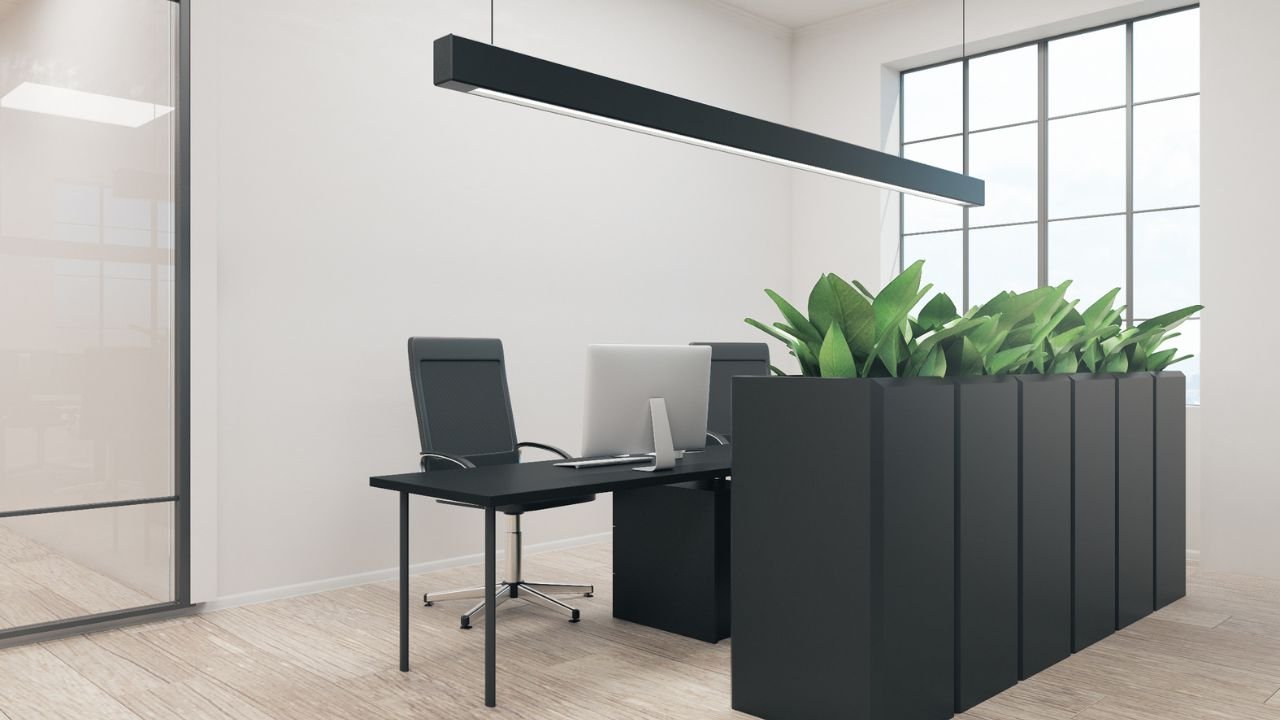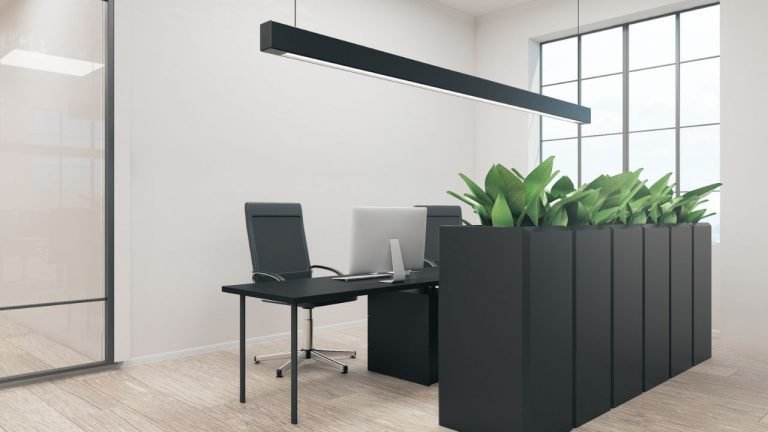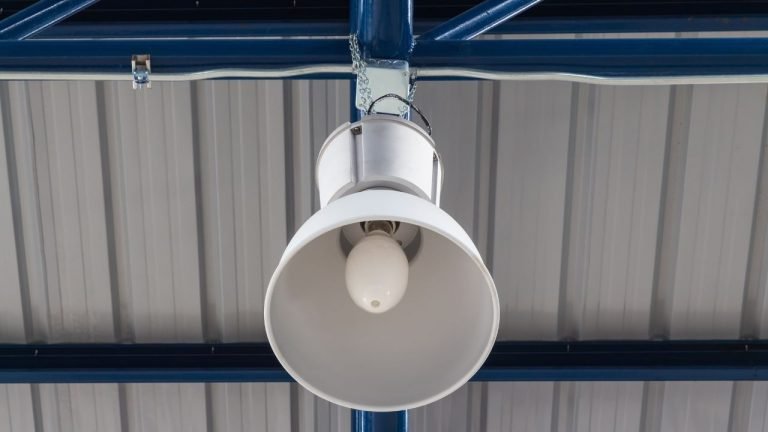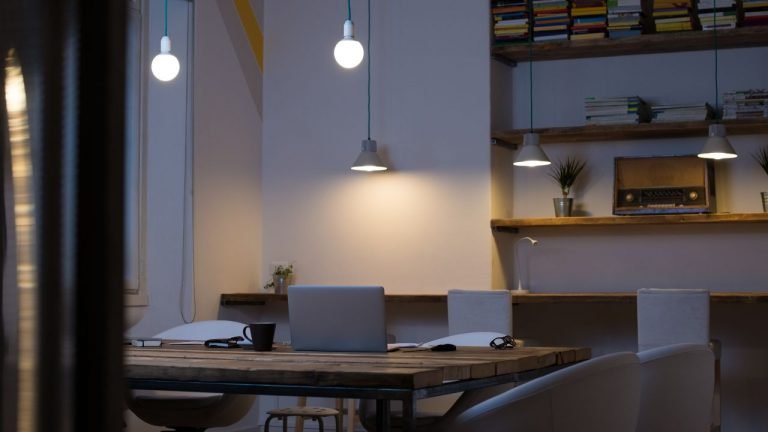Warm Vs Cool Light For Office: Which One’s Better?
Remember the sleepless nights you have spent in your office? All the lights are off, only one light above your desk or in your cabin, and you’re working tirelessly. Nowadays, we spend more time in our office rather than our home.
People who work from home offices, it is applicable for them as well. So, along with every other thing, proper lighting is one of the basic necessities to function efficiently, doesn’t matter if it’s a corporate office or a home office. But what kind of light is better for the office environment, ever gave any thought?
In this article, we are going to cover the very basic ideas of warm light and cool light and all other aspects of it to use in offices to maximize the work output. So, why waste any more time wondering?
Let’s dive into the world of lights and find out the best solutions for our needs!
What Are Warm Light & Cool Light?
Let’s know about warm and cool lights a bit first. It will help us to analyze better to select which light is going to be the best for our workplace. Let’s dive in!
Warm lights contain lower color temperatures and therefore seem yellower. Cool lights feature high color temperatures, resulting in a more crisp and fresh light. Human eyes perceive it as whiter or bluer. Warm white is between 2200K and 3000K, whereas cool white is around 4000K.
If you want the typical yellowish color of a traditional lamp, warm light is the best option for you; it is the most common pick for houses. However, in the office, where we generally want to maximize productivity, the vast and widespread choice is to use cool light.
Why so?
How Cool Light Boosts Productivity
According to several studies, cool lighting improves job performance by increasing mental freshness, clarity, and alertness while decreasing daytime sleepiness and tiredness. It is ideal for brainstorming sessions. This light has been shown to boost attentiveness, mood, and productivity. It can help alleviate fatigue by decreasing melatonin levels.
The amount and color of light we got influence our daily rhythms. White light, like sunlight, is a combination of all the various colors. However, the mix changes throughout the day, with more bright light in the daytime and also more dim light in the late afternoon.
Bright white LED light bulbs have a blue-rich color profile similar to that of daytime sunlight. But, soft white, yellowish or dim incandescent light bulbs have a red-rich color sample to the evening sunlight. Special cells in our eyes aid in the tuning of our inner riffs to the sequence of light and shadow we encounter.
These cells are particularly sensitive to blue light, promoting cognitive performance in responding to colored morning light and relaxation when light emitting levels fall.
This process has an impact on the mechanisms which do enhance memory and learning. Our brains are wired to acquire new knowledge in the daytime when there is a lot of clarity, and then to retain it in long-term memory while we sleep at night when there isn’t much light.
Bright light activates brain areas that enhance attentiveness and boosts cognitive ability. Light stimulates memory-forming components as well as ones necessary for mood control and overall cognitive performance.
Color And Temperature For The Office
The color and temperature of office lighting should change depending on the space’s use. The proper quantity of light, as well as the health consequences of varied light spectrums and intensities, are critical considerations in our design.
Whether the office light sources are totally natural or not, bright or dim, blue or yellow, the lights employees are exposed to impact their mood, physical health, and circadian rhythms. Also, it affects the employee’s productivity as well as their creativity. There are a lot of interesting studies on the nature of our environment and how it affects our brain’s ability to perceive and function in different ways.
You are most creative if you’re well rested, attentive, and enthusiastic, and the correct illumination may help you achieve that condition. However, low illumination might strain your vision and cause you to feel sluggish and fatigued.
Too-bright lights, on the other side, can be damaging to your eyes, disrupt your sleep, and even provoke migraine symptoms. When your brain works overtime to fill in the spaces, it becomes tired and inhibits your capacity to be efficient and imaginative.
With so many different light colors and fixtures available, it may be difficult to identify which form of lighting is ideal for the business. Warmer lights are often better for resting, whereas cool blue and white lights are better for working and focusing.
Color temperature in the office corridor should help workers and visitors feel at ease. The office hallway is the most important area in the workplace, especially for visitors. A cooler white light will make people feel better, and the initial impression will be excellent.
To encourage employees to relax and take a pleasant break in the break room, changing the color temperature from orange and yellow to clean blue and white can be an excellent choice.
The warmth and hue of the lights should change depending on the time of the day. The light should be stronger and cooler in the morning to assist employees stay aware and focused. As the day progresses, the lighting should become warmer, assisting employees in wrapping up.
What Color Light Is Good For Home Office
A home office is just an office that we locate in our house, but it requires the correct setup to perform well. One should avoid working directly beneath overhead lights at all times. Look for techniques to filter out the surrounding light that will highlight the working environment instead.
Lampshades soften and disperse harsh light. On the other hand, an upward-facing floor lamp will reflect light off of ceilings and walls. The objective is to brighten the whole room without causing excessive glare or contrast, as well as to prevent casting shadows.
As previously stated, most home offices will have both diffused ambient lighting and task lighting focused on particular workstations. Aside from these two forms of functional lighting, you may want to consider adding decorative and accent lighting to assist improve the environment of your home office. Ambient light and decorative light sources provide aesthetic appeal to your workspace.
Which Color Is Good For Computer Work
Choose a well-defined light source dedicated to what you’re doing for computer work, documentation work, and other task-intensive chores. An adjustable desk lamp can direct light precisely where it is needed and assist with a range of tasks.
Set up precise task lighting for each and every workspace in your home office, such as a desk for desktop and laptop work, an area for organizing files, as well as a table for examining printed things.
The ambient lighting should be dim or glare-free. The best lighting options are provided by indirect or direct light fixtures. This type of light fixture is suspended from the ceiling and provides more even illumination.
How To Do The Proper Lighting Setup
Always keep in mind where the light is originating from. If a light source is placed behind you when you work on your computer can surely cause an annoying glare on the monitor. Along with this, remember to eradicate any unwanted shadows caused by task lighting bulbs.
If you type with your dominant wrist, for example, your hand and arm may throw shadows if the placed work light is also on the side. When designing your workplaces, remember to keep window placement in mind.
Don’t miss the distinct advantage of natural light from a window, skylight, or other doorways. Sunlight creates warm lighting which improves the working atmosphere. On the other side, you may need to consider for direct sunlight, which causes excessive reflection at certain hours of the day.
To reduce the reflection and glare and to optimize your outdoor views, it is always better to have natural daylight in front of or adjoining to work desks and device screens. You can also face the desk to either north or south so the sunshine can not cast a shadow at any particular time of day.
Solar blinds soften and decrease heat without limiting light and vision during the day to suit various degrees of brightness. A standing shield would do a good job of filtering the sun reflecting throughout a window.
Make The Most Of Natural Light
According to studies conducted by Cornell University’s department of design and environmental analysis, employees exposed to natural light in the workplace reported an 84 percent decrease in eye strain, headaches, and impaired vision.
The American Academy of Sleep Medicine found that exposure to natural light helps regulate hormones and maintains a healthy circadian rhythm, allowing employees to sleep comfortably at night and function well the following day.
Windows are often intended for communal spaces rather than individual offices, allowing as many people as possible to benefit from natural light. If your office lacks windows, try skylights and light-reflecting materials.
Which Lights You Should Use?
LED bulbs have gained popularity in recent years as an energy-efficient choice for fluorescent lights. LED lights can be a little bit more expensive than fluorescent ones, but they help save money in the long run when utilized in an office. Because, LED bulbs typically have a longer duration than fluorescent lights and these do not waste energy by emitting infrared light.
Why LED Is The Best Choice?
In addition to their monetary benefits, LED lighting also improves the employees’ health. Fluorescent bulb is unlikely to trigger migraines, it may provoke migraine symptoms in those who are sensitive to them.
Fluorescent lighting can also affect sleep patterns by preventing the production of melatonin. This happens mostly when employees frequently remain at the workplace until sunset.
But, LED lights can typically be adjusted to correspond with the time of day and weather, making them a healthier option for employees.
Energy Savings Lights
Useful energy-saving light bulbs include compact fluorescent lights (CFLs), halogen incandescent bulbs, and LEDs and LDR bulbs. Installing motion-sensored lighting in places such as restrooms, basements, and supply closets is another excellent way to conserve energy.
Setting lights on a timer and preventing wastage of light in the room can also help save energy and money. Additionally, putting dimmers enables you to lower the lights when less brightness is needed for your task.
Concluding With The Power Of The Right Light
Whether it’s to energize and create a relaxing place or a productive working area, lighting is a depth of experience and technical understanding that allow us to truly dig in. We always should remember the prime factors of lighting setup in an office and follow accordingly to get the maximized output.
Along with our guidelines, if you’re interested in diving deeper into the bright world of lighting, there is a recommended book called “Welcome to Your World: How the Built Environment Shapes Our Lives” by Sarah Williams Goldhagen’s. Studies that highlight the impact of environmental design on general wellbeing are abundant in this book.



![4 Types Of Lights Use In Home Offices [& The Best One]](https://homethereby.com/wp-content/uploads/2022/07/Types-Of-Lights-Used-In-Home-Offices-768x432.jpg)



